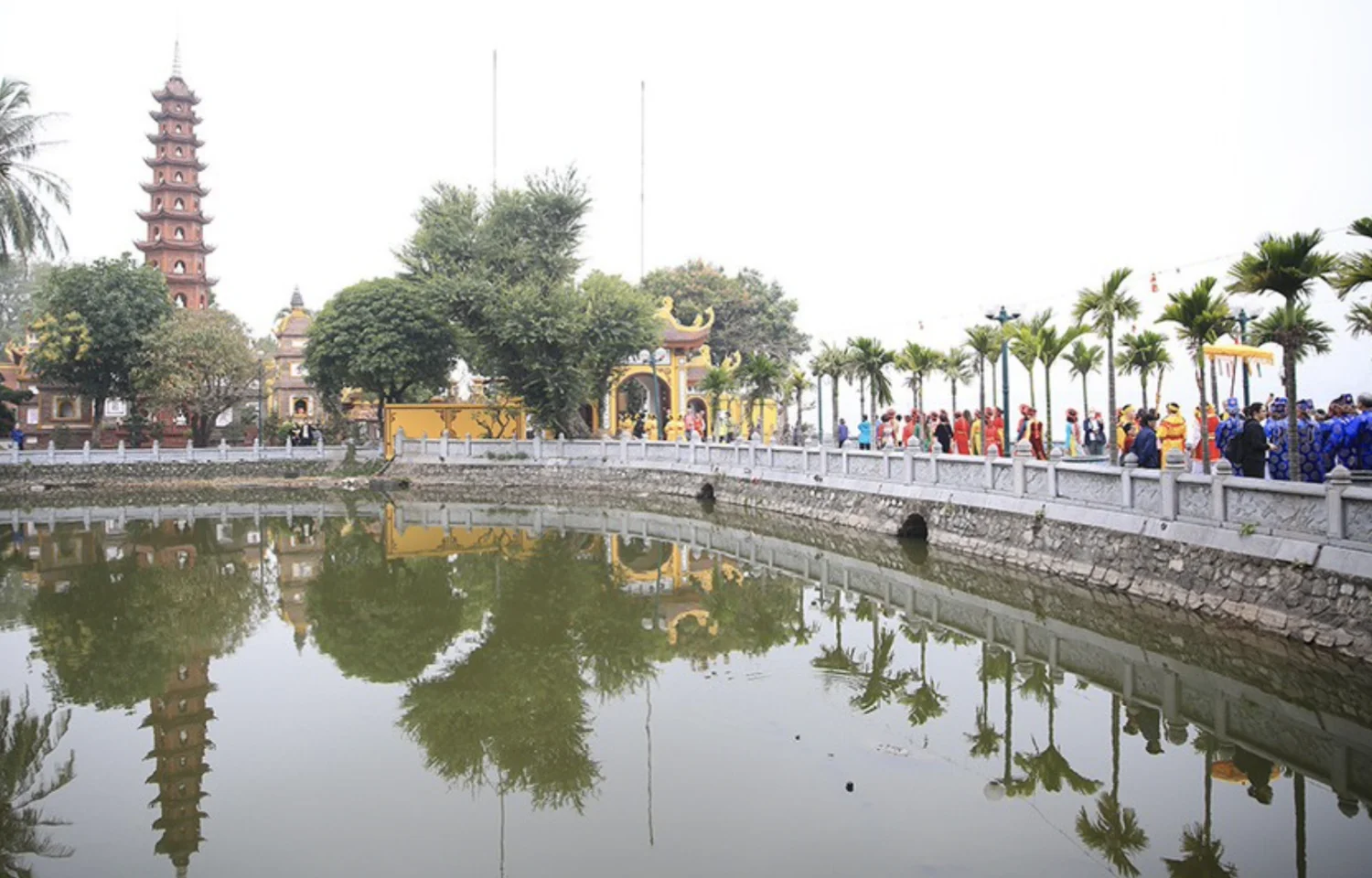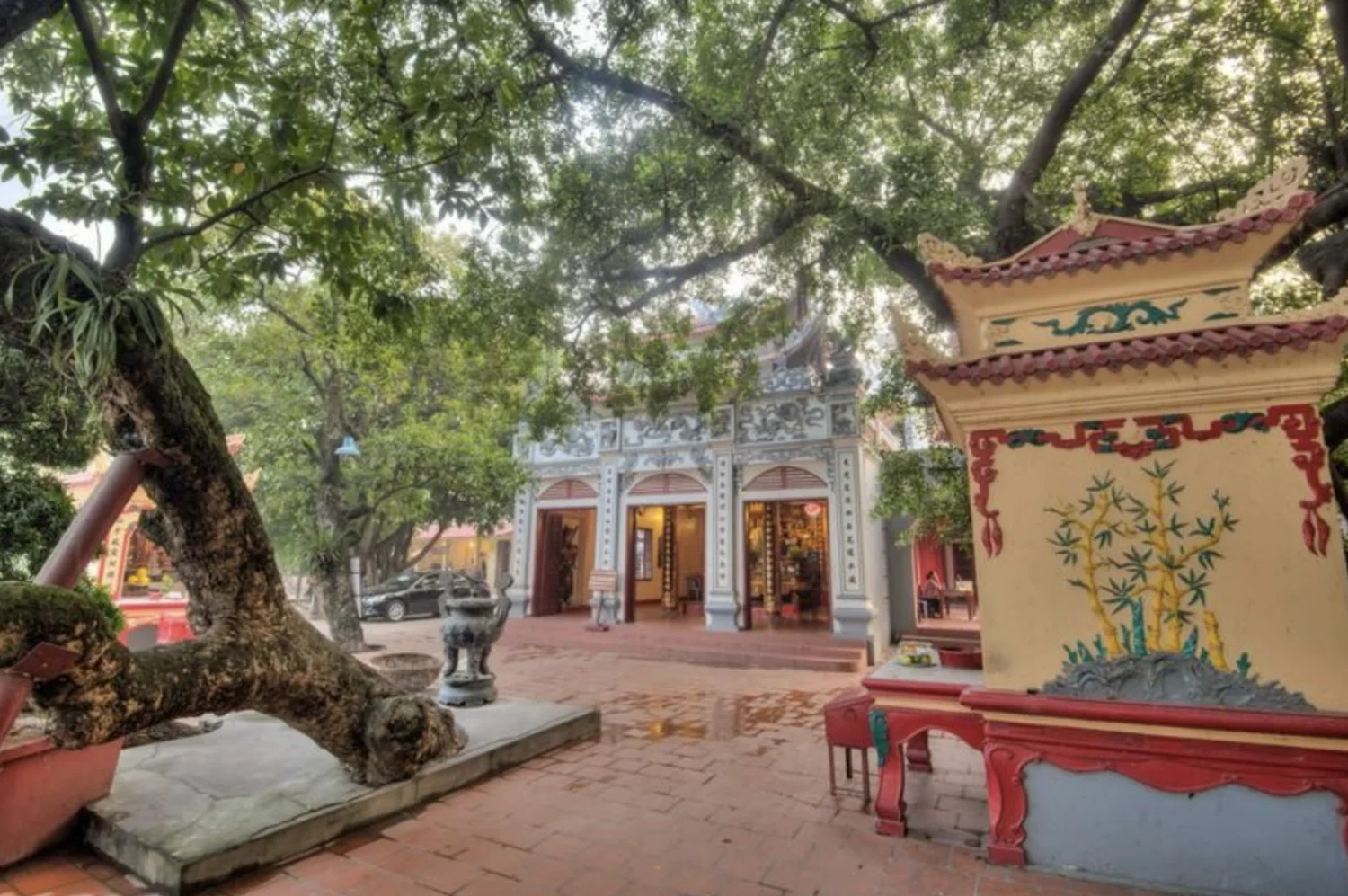Tay Ho lake, located in the West of the ancient capital city of Thang Long (now Hanoi), is known as a sacred land that has been accumulating a rich cultural heritage for over a thousand years. With its dense system of historical sites, old villages, traditional craft villages and picturesque scenery associated with many legends, Tay Ho possesses a unique cultural identity. In the context of Hanoi promoting the development of cultural industry, Tay Ho district is directing resources to build creative cultural spaces and boost tourism, with the goal of establishing Tay Ho as the "cultural and tourism center" of Hanoi in the coming years.
A land blessed by dragons
In the minds of Hanoians, Tay Ho always evokes precious cultural and historical values. According to folk beliefs, the land around Tay Ho lake is shaped like various auspicious animals blessing the area - the shrine of Quan Thanh resembles a phoenix, Yen Ninh village a dragon, Quang Ba village a turtle, Quan La village a horse, and Nghi Xa village a unicorn. All these magical creatures are said to bow down to Tay Ho lake, which is seen as the epicenter of this "sacred land".
Over centuries, Tay Ho has accumulated a thick layer of rich cultural heritage. Surrounding the emerald waters of Tay Ho lake are many historical sites dating back to the Ly-Tran dynasties such as Tran Quoc Pagoda, Quan Thanh Shrine, Tay Ho palace where Goddess Lieu Hanh is worshipped. It is considered one of the cradles of Mother Goddess religion in Vietnam. Among the 71 sites in Tay Ho, 40 have been recognized national relics. The sites preserve precious artifacts such as stone steles, couplets, memorial stelae and hundreds of bronzeware, wood and stone sculptures.
Traditional craft and intangible villages are scattered around the lake, including washi paper-making in Yen Thai village, peach blossoms in Nhat Tan village, quince orchards in Tu Lien village, lotus planting and processing in Quang An village, and phu thuong rice cakes in Phu Thuong village. Some crafts have existed for over a thousand years and are a source of pride for the millennia-old traditions of Hanoi.
Tay Ho lake itself has become an endless wellspring of inspiration for generations of Hanoians. Its spring festival season attracts millions of domestic and international tourists with unique rituals and performances. The festivities mainly take place in villages in spring and have diverse ways of expression, from ceremonial rites to folk singing and dancing. They all aim to pray for rain, celebrate harvest, give thanks to heaven and earth as well as ancestors.
Unlocking cultural potential
In recent years, as Hanoi promotes the development of cultural industry, Tay Ho district has focused resources on building creative cultural spaces to meet people's cultural and entertainment needs, enhance the attraction of Tay Ho, and foster a sense of cultural preservation. This is also a way to conserve and promote the thousand-year cultural values while boosting tourism.
One such notable event was the "Light Art Festival of Hanoi - Sparkling Thang Long" organized on New Year's Eve 2024 by Tay Ho district authorities in collaboration with partners. Over 2,024 drones created stunning light performances depicting images of King Ly Thai To, dragons flying in the sky and famous landmarks, reminscing on the historic glory of Thang Long-Hanoi during the transition between two cosmic phases. The festival received an enormous response with millions of viewers.
According to Chairman of Tay Ho People's Committee Nguyen Dinh Khuyen, the festival aimed to become a meaningful and civilized New Year's Eve celebration imbued with Vietnamese identity and meet locals' spiritual and cultural needs. It also reinforced Hanoi's position as an international tourist hub and made residents proud.
Bui Thi Lan Phuong, Vice Chairwoman of Tay Ho People's Committee, shared that in 2024 and beyond, Tay Ho district will focus on effectively managing its cultural heritage and speeding up investment projects to restore and renovate historical sites. Notable initiatives include developing Tay Ho as a cultural tourism destination linked to washi paper village of Yen Thai, peach blossom garden of Nhat Tan, quince orchard of Tu Lien, lotus planting in Quang An, and experience traditional rice cake making in Phu Thuong village.
The district will also organize landmark cultural events associated with Tay Ho lake and surrounding historic-cultural sites. It connects and promotes cultural tourism exploring the local historical and cultural traditions. Continual innovation will be made in operating the Tay Ho Creative Cultural Space, with participation from residents and professional artists. New creative cultural spaces will be developed tying in historical relics such as experience zones on traditional washi paper making relating to Trich Temple in Yen Thai village and phu thuong rice cake making linked to Phu Gia Temple.
Private sector involvement and digital transformation will also facilitate closer management. All efforts aim to further tap into Tay Ho's cultural values and become a magnet for more visitors, in fulfilling its ambition as Hanoi's prime "cultural and tourism center". With its thousand-year rich cultural vestige, scenic beauty and vibrant cultural activities, Tay Ho is set to attract millions more domestic and foreign tourists in the coming years.










